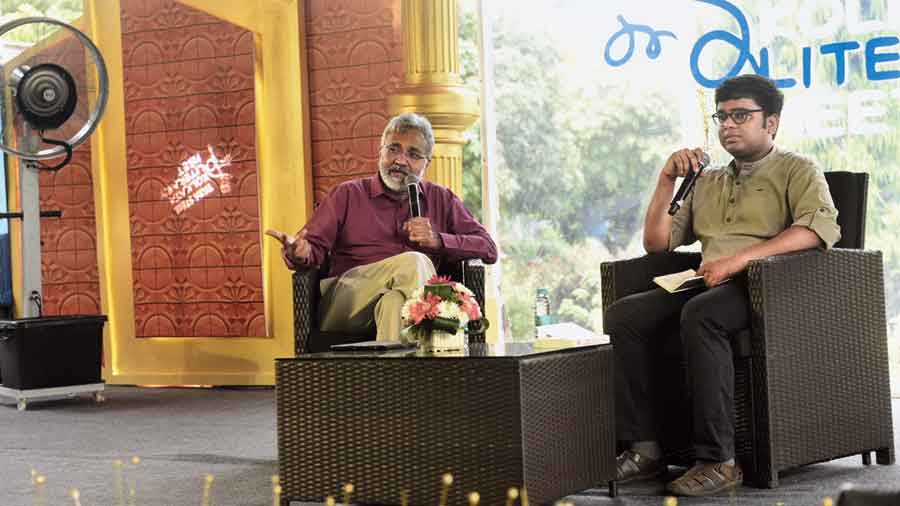All Indians are migrants and the racial purity of Aryans is a myth, a session on Day Five of the Tata Steel Kolkata Literary Meet (Kalam), held in association with the Victoria Memorial Hall and The Telegraph, discussed on Saturday.
Veteran journalist Tony Joseph, author of Early Indians: The Story of Our Ancestors and Where We Came From, was at the session with Sujaan Mukherjee, who is part of the Delhi Art Gallery’s museums initiative.
Mukherjee read out a passage from the book that sums up its narrative.
“So who are we Indians really? The best way we can define ourselves is as a multi-sourced civilisation, not a single-source one, drawing its cultural impulses, its traditions and its practices from a variety of heredities and migration histories.... Those who came even later seeking refuge or conquest or for trade and those who chose to stay, all have mingled and contributed to this civilisation we call Indian. We are all Indians and we are all migrants.”
Joseph explained the “four classes of migration” that were influential in shaping not just Indian, but the global demography.
This perspective, something that was not available “even 10-15 years ago” is based on DNA collected from remains of people who lived in this world tens of thousands of years ago.
• The first class of migration is out-of-Africa migration that started around 70,000 years ago, said Joseph. It happened when a band of modern humans moved out of Africa and then, over the following thousands of years, went on to populate the whole of the world.
• The second was related to agriculture. After the glacial age, modern humans in different parts of the world started experimenting with agriculture. They became farmers from hunter-gatherers and it led to a population explosion, which, in turn, led to migrations.
• The third class happened when a group of modern humans mastered the art of mobility — wheels and horse riding. People from central Asia moved across Europe and Asia.
• The fourth class happened in much more recent times, the colonial migrations. They started when a small group of people in Europe figured out how to travel large distances overseas and change the demography.
Out of these four classes, the colonial migrations had very little impact on India because the number of migrants was too few, said Joseph.
“To understand the Indian population formation, you have to understand the other three classes of migrations. Out of those three classes, there are two agriculture-related migrations that shaped Indian demography. One, from the West and one from east Asia, as a result of China taking to agriculture and a group from east Asia moving to India about 4,000 years ago.”
Racial superiority myth
Mukherjee wanted to know about early Indians. “Who were the Aryans? Where did the caste system begin? What do the findings from prehistory tell us about that,” he asked.
Joseph said the “usual assumption” has been that the caste system began with the arrival of the central Asian Steppe migrants who called themselves the Aryans and arrived between 2,000 and 1,500 BC.
“But now we know this is not true. Genetic research shows that until 100 BC, there was significant mixing of people of all the migrations,” said Joseph. He called the time between 2000 BC and the common era “the most tumultuous period of Indian history”.
The Harappan civilisation started declining around 1900 BC because of a long drought, triggering the migration of its people who moved east towards north and south India.
“As the people were moving east, there were new migrants coming from east Asia. It did not end there either,” he said.
Between 2,000 and 1,500 BC, another major group of migrants from central Asia, who had far greater mobility, caused a language shift from pre-Aryan languages to Indo-Aryan languages in northern India.
“Amid all these, what is happening underneath is the mixing of people. The natural result of migration is mixing of people, cultures, adaptations, all of that,” said Joseph.
“Today, no matter how remote a region you go to, you will still find that all populations are mixed. Therefore, to suggest that the caste system began with the arrival of Aryans is not true,” he said.
The mixing, he said, continued till 100 BC, which saw the emergence of endogamy — the practice of communities marrying within themselves. By the time endogamy — which is said to be the distinguishing feature of the caste system — set in, it was around 2,000 years ago.
